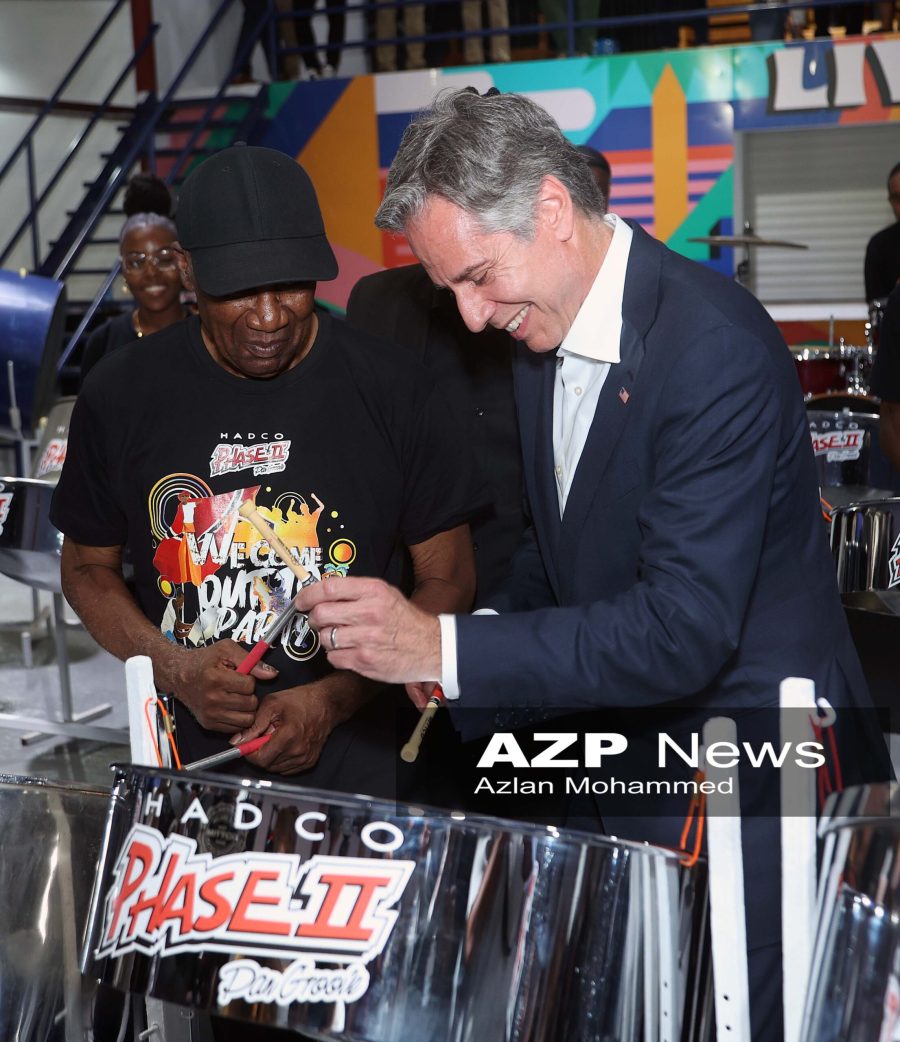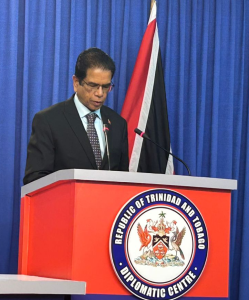File photo: US Secretary of State Anthony Blinken is taught about the steelpan by Dr Len “Boogsie” Sharpe in July last year at that Phase II panyard
THE Tassa Association of Trinidad and Tobago (TATT) says the tassa drum is a more authentically local instrument than the steelpan.
This claim comes in response to Prime Minister Dr Keith Rowley’s recent defence to include steelpan in a new Coat of Arms.
Dr Rowley, speaking at the PNM’s La Horquetta/Talparo Constituency Conference on Tuesday night, explained that the steelpan was chosen to replace Christopher Columbus’ three ships on the Coat of Arms because it is an instrument invented in Trinidad and Tobago, making it indigenous to the nation. He acknowledged the popularity of the tassa and other instruments but noted their foreign origins.
In a statement released on Wednesday, TATT supported the steelpan as the country’s first national instrument but argued that it does not fully represent local heritage.
“No part of the steel drum is from T&T, as it is a fully imported metal container that came from other countries into Trinidad,” TATT stated.
The association highlighted the tassa drum’s entirely local composition. “The skin is from our local goat, sheep or deer, the sticks are made from T&T wild sugarcane, the bowl is made from T&T clay, and the bass is made from the mango tree,” TATT stated.
It also suggested that the tamboo bamboo instrument, like the tassa drum, is more indigenous than the steelpan.
Offering a version of the steelpan’s history, TATT acknowledged the ingenuity involved in transforming imported steel drums into musical instruments.
It stated, “What was done in Trinidad with the imported steel drums was the retuning and fine-tuning the steel drum/pan into a full musical instrument.”
TATT credited the nation’s ancestors for their role in this innovation, noting that colonial bans on bamboo and biscuit tin sounds led to the use of discarded steel drums.
Despite recognising the steelpan’s historical significance, TATT maintained that the tassa drum represents a more authentically local instrument.
It stated, “To compare both instruments, it’s clear the steel drum is a foreign metal instrument and the tassa is a 100 percent local instrument.”
See related stories below:
![]()














